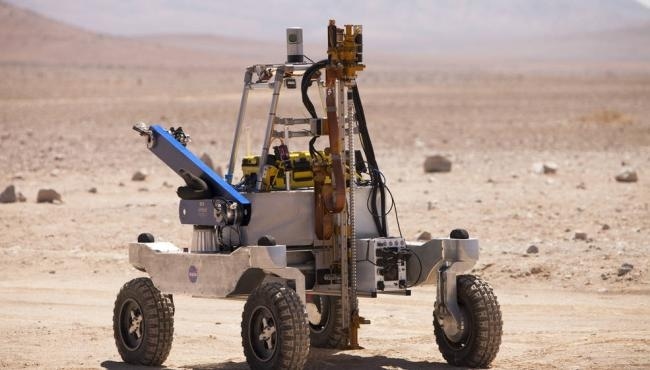
NASA researchers spent a month on the site to test future Mars rover equipped with scientific instruments
By Hira Bashir
NASA has successfully completed the testing of its future Mars rover that will be used to detect signatures of life on Red Planet. The testing was conducted in Chile’s Atacama Desert – one of the driest places on the world – and involved driving, drilling and analysis of the compositional properties of the desert samples.
Atacama Desert contains the soil nearly identical to that found on the Mars. Plus, its microbial life thrives in extreme environment and intense ultraviolent radiation, which is similar to the harsh conditions found on Mars. This makes it an ideal candidate to understand where life might be found on Mars and what form it might take.
A team of thirty-five researchers and scientists spent the whole month of February working in the aridness of Atacama Desert and tested two tools mounted on KREX-2 rover: a lightweight two-meter drill and a robotic sample transfer arm. Three life-detecting instruments were also tested to check their new modifications. These tools would help track building blocks of life on Mars.
Soil samples collected and analyzed during the one-month testing period suggests that extremely dry conditions have persisted in the Atacama Desert for at least 10 to 15 million years. The desert harbors very limited life due to strong, persistent ultraviolent radiations from the sun but whatever life exists here is in the form of microbes living underground or inside rocks.
Similarly, if life exists or ever existed on Mars, it should thrive underground due to planet’s surface dryness and extensive radiation exposure.
During this testing season, researchers were able to retrieve the soil samples from depths of up to two meters. Attaining that depth was one of the primary objects of this month’s trials.
“The drill, rover and robot arm combination behaved beautifully in the field,” said NASA’s Atacama Rover Astrobiology Drilling Studies or ARADS Principal Investigator Brian Glass. “It was a steady platform that enabled us to go deeper than we expected.”
This was the second test in the series of four annual tests that will continue till 2019. Next year, rover will itself carry and operate the life-detection instruments. These tests are necessary to ensure the smooth functioning of robotic rover on actual Martian conditions as rover can damage or flip over while traversing Mars terrain and ruin the whole mission.



